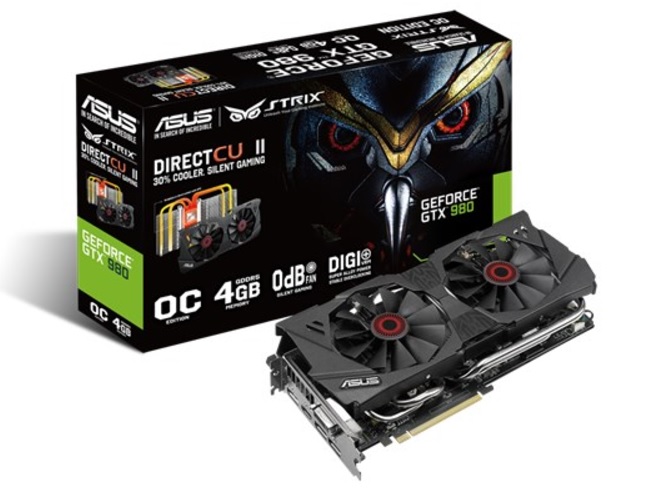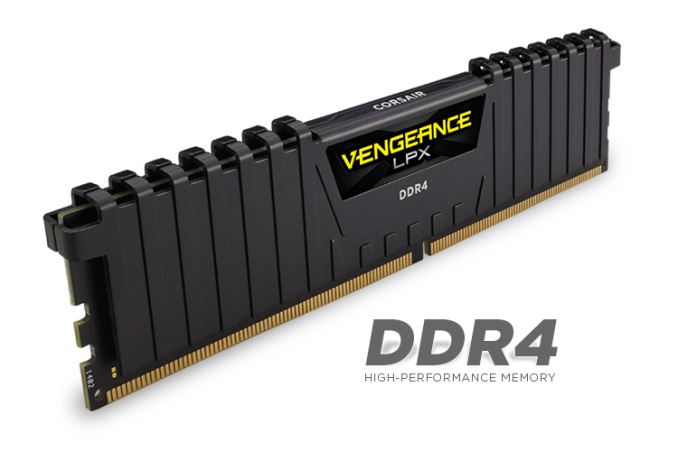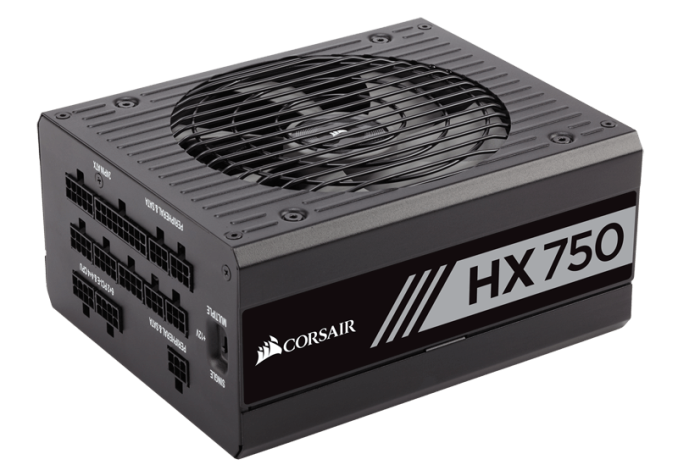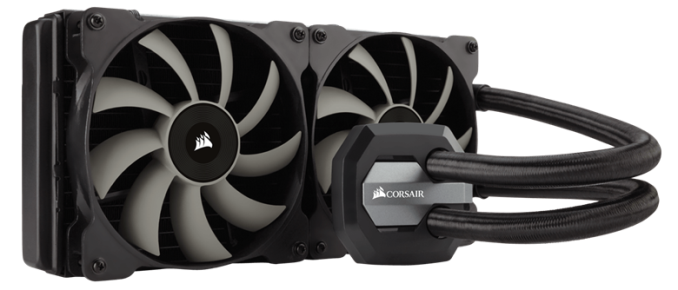The ASRock Fatal1ty X299 Professional Gaming i9 Motherboard Review
by Joe Shields on September 26, 2017 8:00 AM EST- Posted in
- Motherboards
- Gaming
- Intel
- ASRock
- SLI
- Fatal1ty
- CrossFire
- X299
- Skylake-X
- Kaby Lake-X
Test Bed and Setup
As per our testing policy, we take a high-end CPU suitable for the motherboard that was released during the socket’s initial launch and equip the system with a suitable amount of memory running at the processor maximum supported frequency. This is also typically run at JEDEC subtimings where possible. It is noted that some users are not keen on this policy, stating that sometimes the maximum supported frequency is quite low, or faster memory is available at a similar price, or that the JEDEC speeds can be prohibitive for performance. While these comments make sense, ultimately very few users apply memory profiles (either XMP or other) as they require interaction with the BIOS, and most users will fall back on JEDEC supported speeds - this includes home users as well as industry who might want to shave off a cent or two from the cost or stay within the margins set by the manufacturer. Where possible, we will extend our testing to include faster memory modules either at the same time as the review or a later date.
Readers of our motherboard review section will have noted the trend in modern motherboards to implement a form of MultiCore Enhancement / Acceleration / Turbo (read our report here) on their motherboards. This does several things, including better benchmark results at stock settings (not entirely needed if overclocking is an end-user goal) at the expense of heat and temperature. It also gives, in essence, an automatic overclock which may be against what the user wants. Our testing methodology is ‘out-of-the-box’, with the latest public BIOS installed and XMP enabled, and thus subject to the whims of this feature. It is ultimately up to the motherboard manufacturer to take this risk – and manufacturers taking risks in the setup is something they do on every product (think C-state settings, USB priority, DPC Latency/monitoring priority, overriding memory sub-timings at JEDEC). Processor speed change is part of that risk, and ultimately if no overclocking is planned, some motherboards will affect how fast that shiny new processor goes and can be an important factor in the system build.
| Test Setup | |
| Processor | Intel i9 7900X (10C/20T, 3.3G, 140W) |
| Motherboard | ASRock Fatal1ty X299 Professional Gaming i9 |
| Cooling | Corsair H115i |
| Power Supply | Corsair HX750 |
| Memory | Corsair Vengeance LPX 4x8GB DDR4 2666 CL16 Corsair Vengeance LPX 4x4GB DDR4 3200 CL16 (OC) |
| Memory Settings | DDR4 2666 CL16-18-18-35 2T |
| Video Cards | ASUS Strix GTX 980 |
| Hard Drive | Crucial MX300 1TB |
| Optical Drive | TSST TS-H653G |
| Case | Open Test Bed |
| Operating System | Windows 10 Pro 64-bit |
Many thanks to...
We must thank the following companies for kindly providing hardware for our multiple test beds. Some of this hardware is not in this test bed specifically but is used in other testing.
Thank you to ASUS for providing us with GTX 980 Strix GPUs. At the time of release, the STRIX brand from ASUS was aimed at silent running, or to use the marketing term: '0dB Silent Gaming'. This enables the card to disable the fans when the GPU is dealing with low loads well within temperature specifications. These cards equip the GTX 980 silicon with ASUS' Direct CU II cooler and 10-phase digital VRMs, aimed at high-efficiency conversion. Along with the card, ASUS bundles GPU Tweak software for overclocking and streaming assistance.
The GTX 980 uses NVIDIA's GM204 silicon die, built upon their Maxwell architecture. This die is 5.2 billion transistors for a die size of 298 mm2, built on TMSC's 28nm process. A GTX 980 uses the full GM204 core, with 2048 CUDA Cores and 64 ROPs with a 256-bit memory bus to GDDR5. The official power rating for the GTX 980 is 165W.
The ASUS GTX 980 Strix 4GB (or the full name of STRIX-GTX980-DC2OC-4GD5) runs a reasonable overclock over a reference GTX 980 card, with frequencies in the range of 1178-1279 MHz. The memory runs at stock, in this case, 7010 MHz. Video outputs include three DisplayPort connectors, one HDMI 2.0 connector, and a DVI-I.
Further Reading: AnandTech's NVIDIA GTX 980 Review
Thank you to Crucial for providing us with MX300 SSDs. Crucial stepped up to the plate as our benchmark list grows larger with newer benchmarks and titles, and the 1TB MX300 units are strong performers. Based on Marvell's 88SS1074 controller and using Micron's 384Gbit 32-layer 3D TLC NAND, these are 7mm high, 2.5-inch drives rated for 92K random read IOPS and 530/510 MB/s sequential read and write speeds.
The 1TB models we are using here support TCG Opal 2.0 and IEEE-1667 (eDrive) encryption and have a 360TB rated endurance with a three-year warranty.
Further Reading: AnandTech's Crucial MX300 (750 GB) Review
Thank you to Corsair for providing us with Vengeance LPX DDR4 Memory, HX750 Power Supply, and H115i CPU Cooler.
Corsair kindly sent a 4x8GB DDR4 2666 set of their Vengeance LPX low profile, high-performance memory for our stock testing. The heatsink is made of pure aluminum to help remove heat from the sticks and has an eight-layer PCB. The heatsink is a low profile design to help fit in spaces where there may not be room for a tall heat spreader; think a SFF case or using a large heatsink. Timings on this specific set come in at 16-18-18-35. The Vengeance LPX line supports XMP 2.0 profiles for easily setting the speed and timings. It also comes with a limited lifetime warranty.
Powering the test system is Corsair's HX750 Power Supply. This HX750 is a dual mode unit able to switch from a single 12V rail (62.5A/750W) to a five rail CPU (40A max ea.), and is also fully modular. It has a typical selection of connectors, including dual EPS 4+4 pin four PCIe connectors and a whopping 16 SATA power leads, as well as four 4-pin molex connectors.
The 135mm fluid dynamic bearing fan remains off until it is 40% loaded offering complete silence in light work loads. The HX750 comes with a ten-year warranty.
In order to cool these high-TDP HEDT CPUs, Corsair sent over its latest and largest AIO in the H115i. This closed loop system uses a 280mm radiator with 2x140mm SP140L PWM controlled fans. The pump/block combination mounts to all modern CPU sockets. Users are also able to integrate this cooler into the Corsair link software via USB for more control and options.















22 Comments
View All Comments
ddriver - Tuesday, September 26, 2017 - link
Does it support intel's latest and greatest dual core i3 HEDT cpu? If not - no buy.duploxxx - Tuesday, September 26, 2017 - link
why test on a stupid 7900X cpu?duploxxx - Tuesday, September 26, 2017 - link
bring the 16-18 core and show how the dual memory controller is handling the games, after all this is a gaming board ....ddriver - Tuesday, September 26, 2017 - link
Yeah, and don't forget the games that scale up to 16-18 cores.JeffFlanagan - Tuesday, September 26, 2017 - link
For some reason, people feel the need to stream their games on the Internet, so that only leaves 15-17 cores for the game to use.It seems like an i5 is still a much better value for a gaming machine since most games use very few cores.
duploxxx - Wednesday, September 27, 2017 - link
the reason i ask is because threadripper reviews all over the net were hammered with the poor gaming benchies en the reason for specifc settings. guess what, no gaming benchies on the HCC designs from Intel that have the same memory disadvantage.OhWhateverOnceMore - Tuesday, September 26, 2017 - link
"i9" ...ok..."Professional" ... uh uh...
"Gaming" ... /r/hmmm
TEAMSWITCHER - Tuesday, September 26, 2017 - link
Is there an Intel co-marketing kick-back for having a "Gaming" branding? You see it everywhere...oRAirwolf - Tuesday, September 26, 2017 - link
"Curiously, for a motherboard which has "gaming" in the title and having three network ports, we were surprised not to see a Killer Network based NIC which finds its way on to several other gaming motherboards. Network traffic shaping is still possible through software, although Rivet Networks would likely claim they offer an optimized solution if their chip had been used. Perhaps a combination of an Intel GbE, Rivet Networks Killer E2500 GbE, and an Aquantia 10GbE which would have encompassed more of its tarket market."Wutness? Why on Earth would you want to see Killer on a gaming board? ASUS has shown through their own testing that Killer NIC's are trash:
https://rog.asus.com/articles/product-news/tried-a...
That aforementioned paragraph seriously makes me question the legitimacy of reviews on this site now. It is common knowledge that Killer is absolute and utter trash.
BrokenCrayons - Tuesday, September 26, 2017 - link
Oh you beat me to the point here. This is one of very rare times when I'd agree that there appears to be a certain amount of institutional bias at Anandtech in favor of Killer NICs. If you do a search for the string "Rivet Networks" in AT's search box you can find this article from September 2016:https://www.anandtech.com/show/10679/rivet-network...
It looks like that was sort of ground zero for that opinion and it's stuck since. In the comments of that article (disclosure - I was a participant with cynical views of Killer NICs even back then for reasons I make clear in those comments) there was discussion about reviewing and analyzing the E2500. Anandtech has never presented such a review or supplied readers with any data supporting the idea that Killer NICs are somehow superior or worthy of being sought out by consumers. Despite lacking reliable test data, there's still unexplained support in the form of hint-dropped lines like the one you've quoted that imply a certain subset of readers should be seeking out Killer NIC-equipped products or that its somehow unusual that a premium motherboard omits them.
I find the whole thing does hurt Anandtech's credibility. If there's data that supports a Killer NIC being a better option, gather it and publish it. Don't assert and insinuate without any substantially supportive information to a group of people (gamers in this case) without being able to back up those claims. Killer NICs can be acquired for testing. Maybe Rivet's people would supply a product for testing. If Rivet doesn't or does and Anandtech doesn't test it, then what else do we have to go on? Consumers in the target audience are already broadly suspicious of the benefits Rivet claims Killer NICs offer to the point where it seems almost delusional to boost them in a motherboard review.